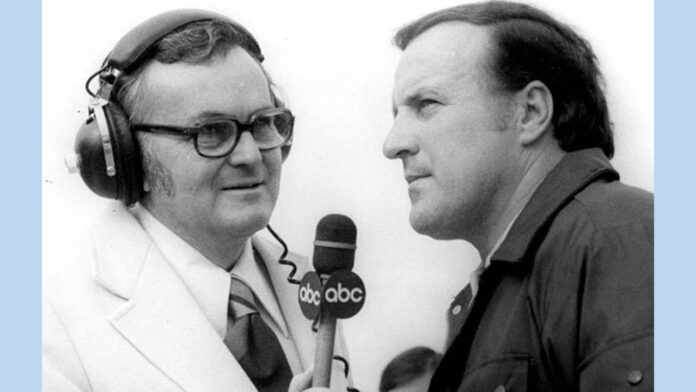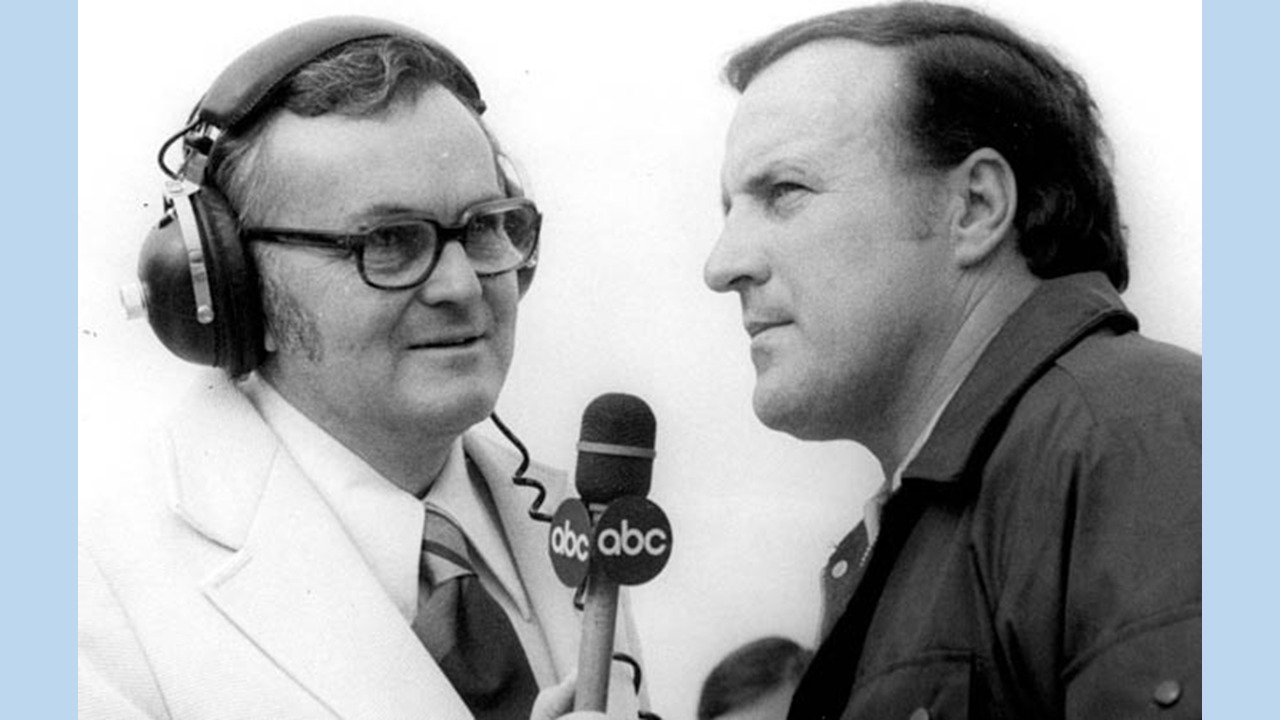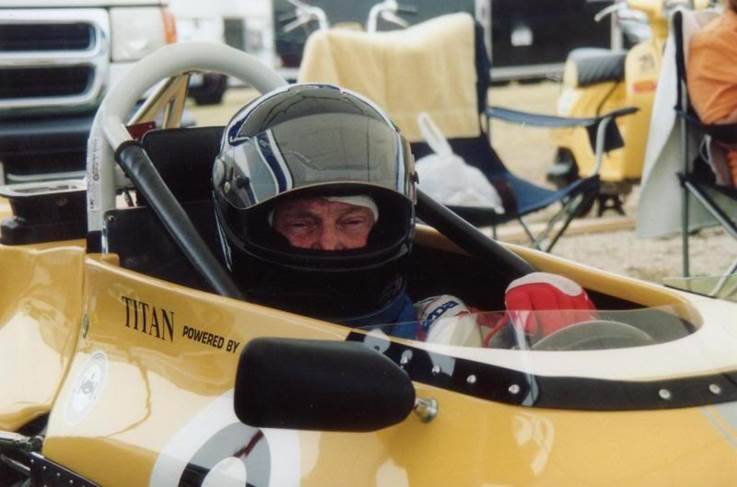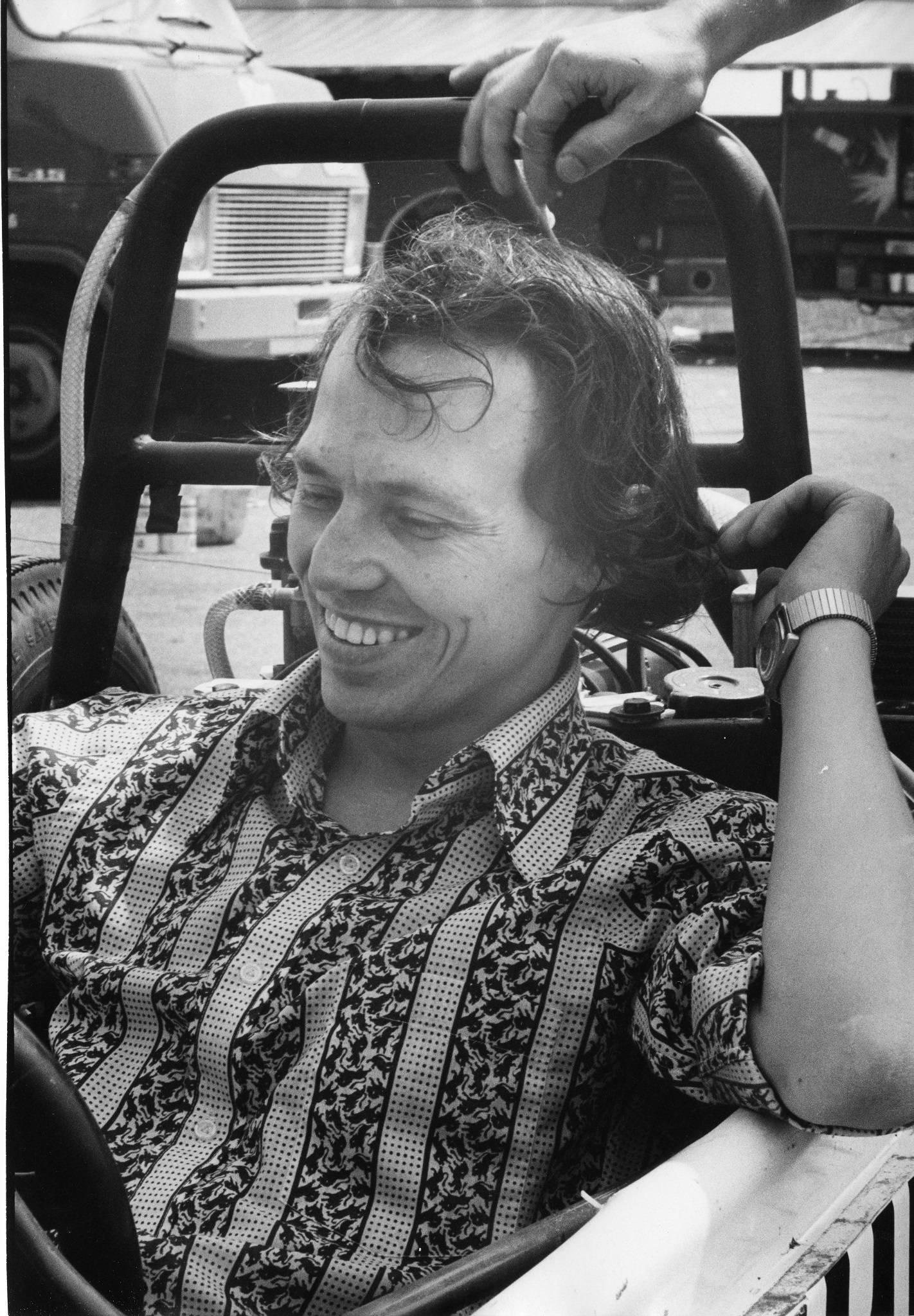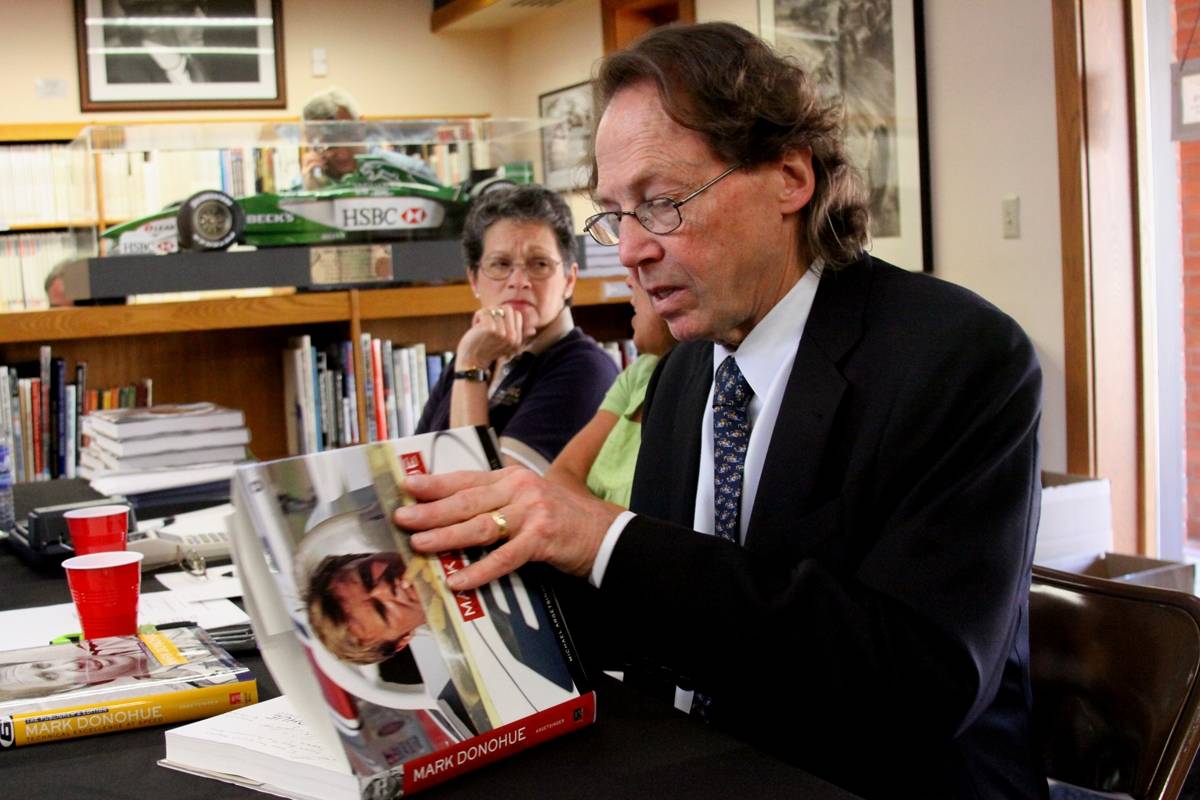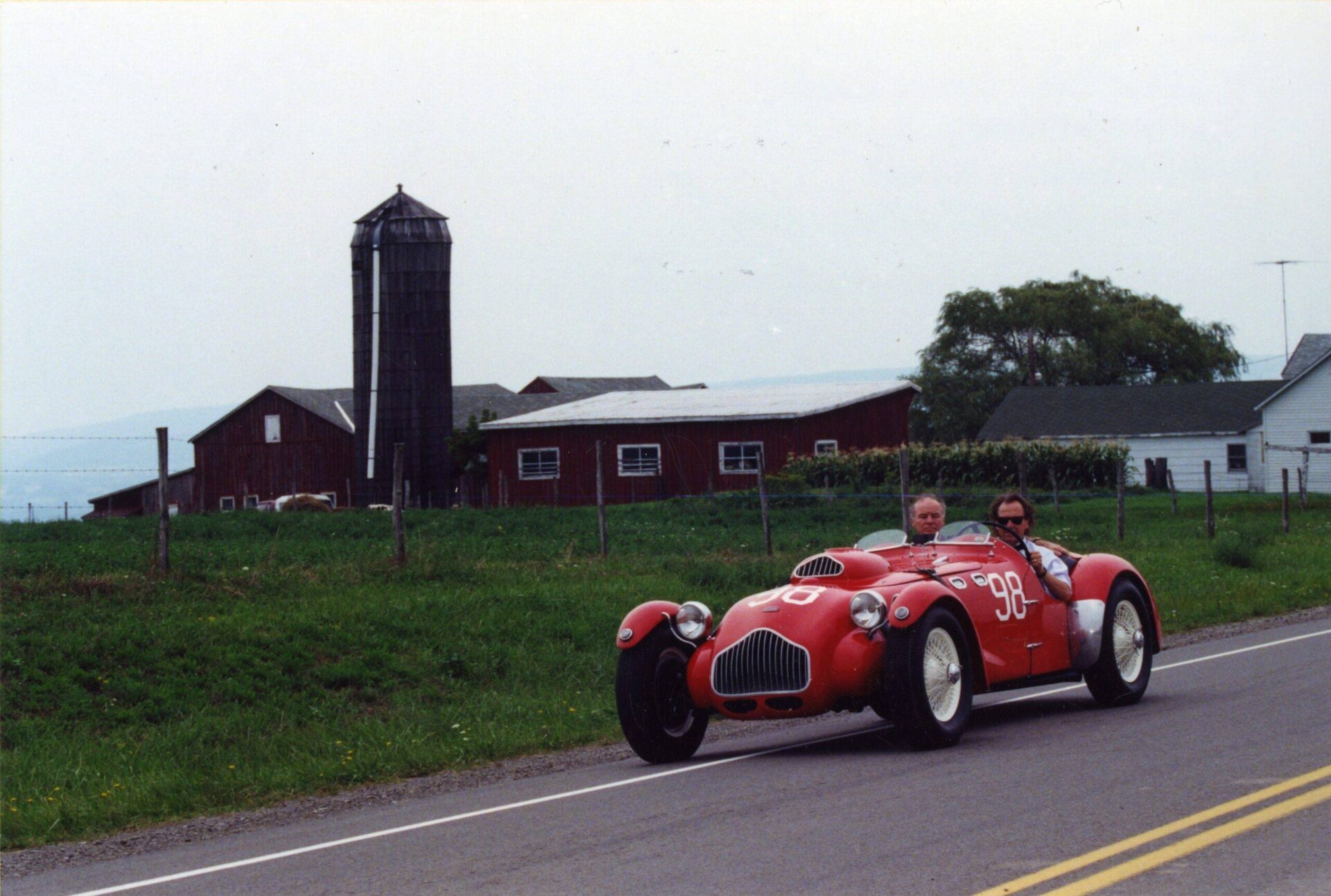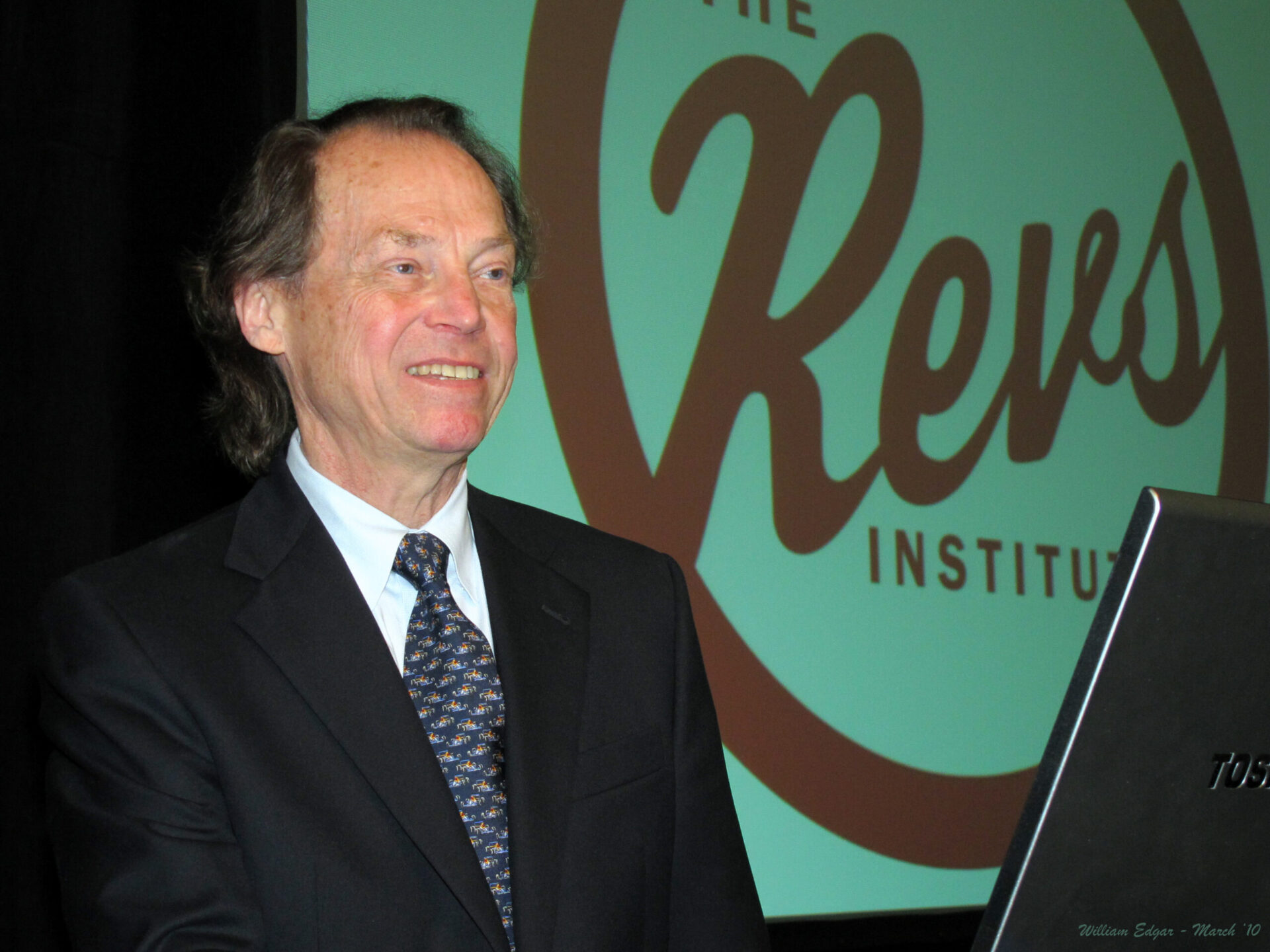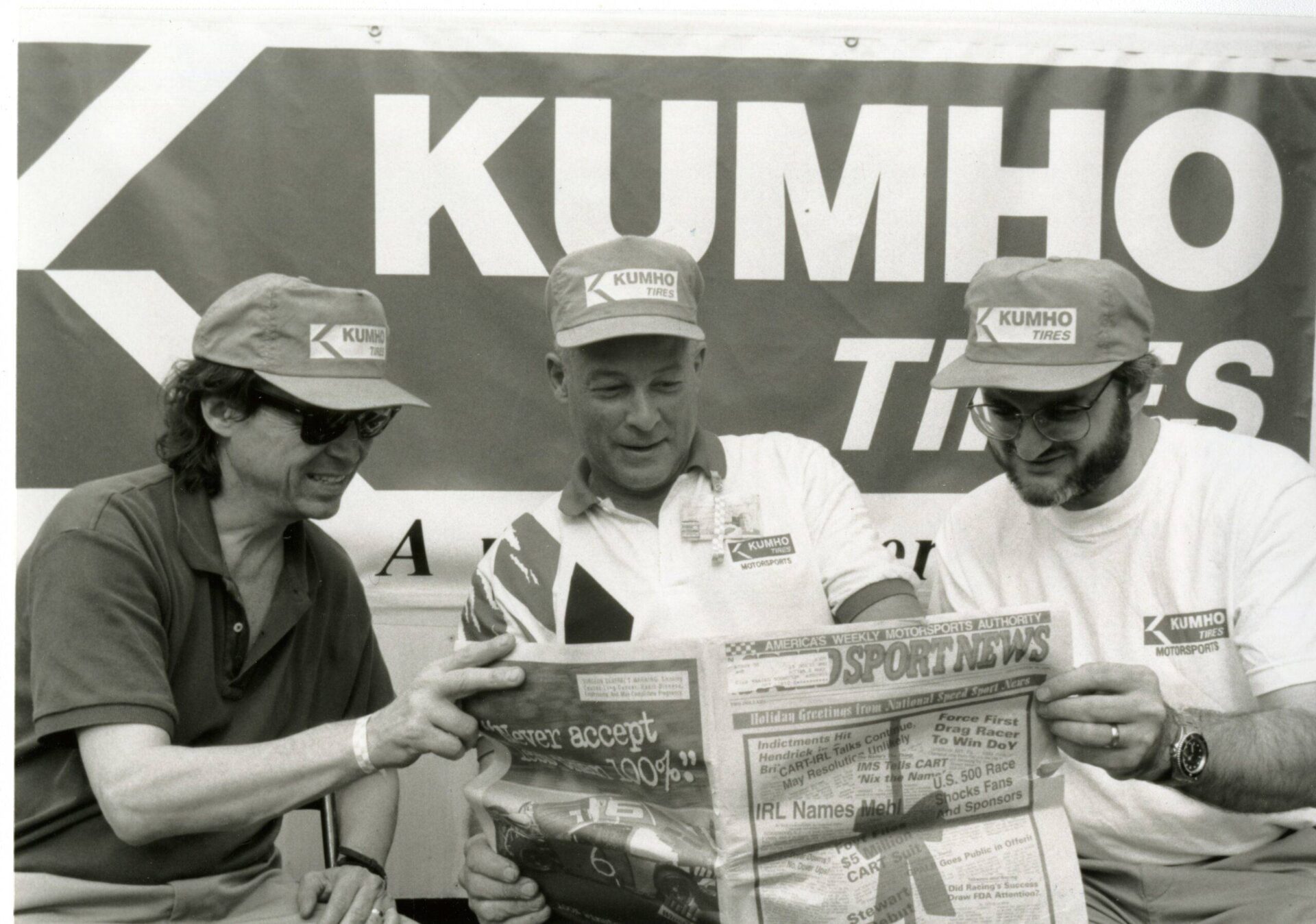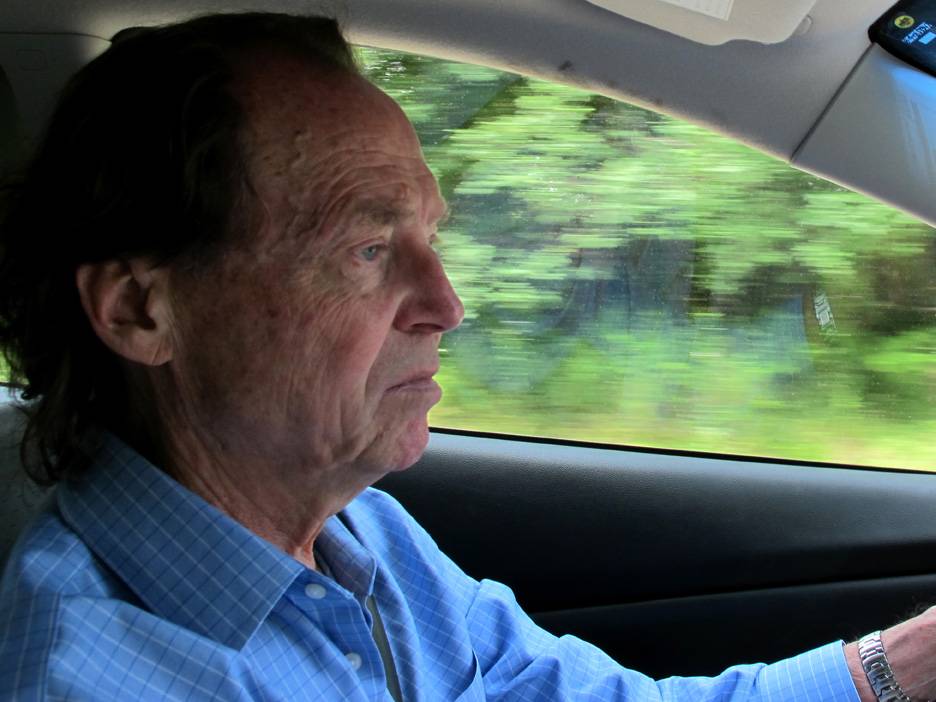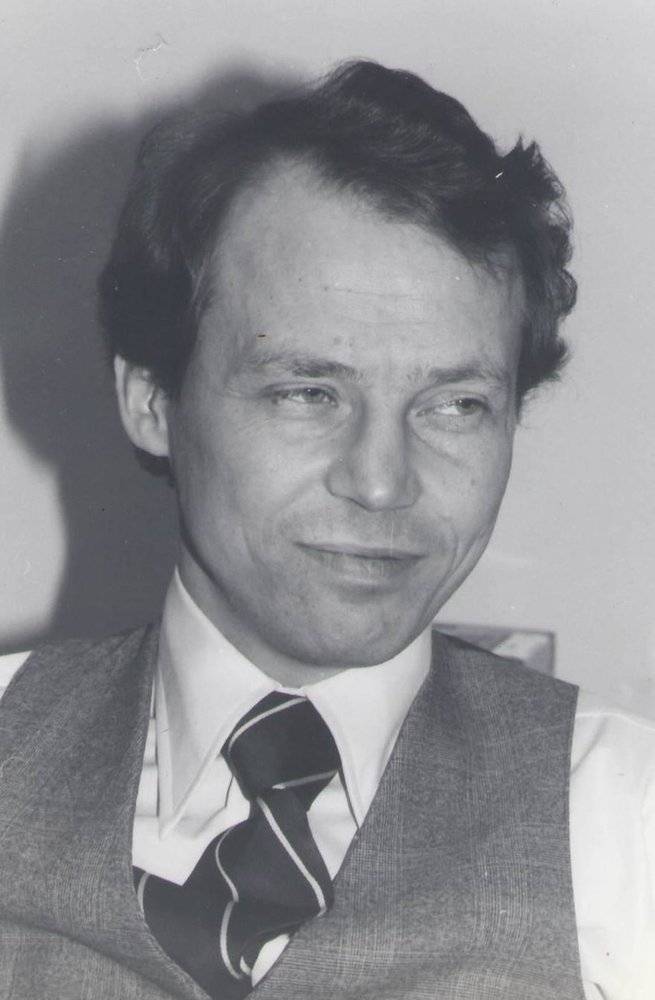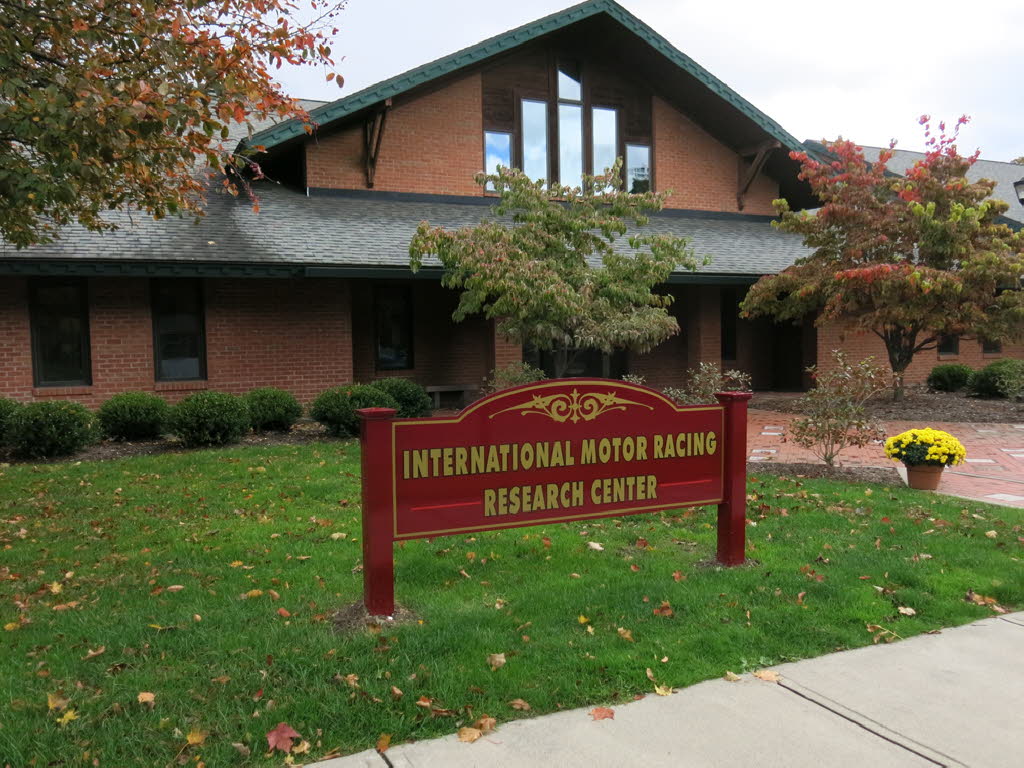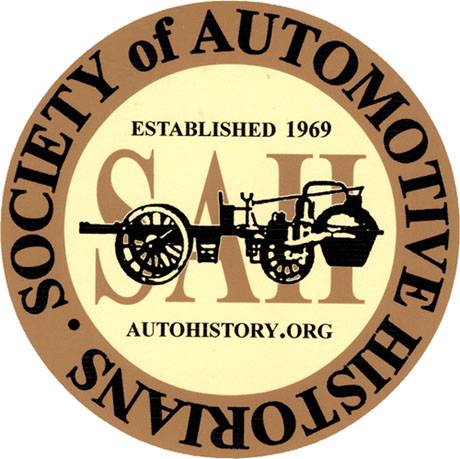Lerner’s presentation covers the early – and often controversial – efforts of TV to bring automobile racing into American living rooms. In 1961, a segment from the Indianapolis 500 time trials was broadcast as part of ABC’s new Wide World of Sports program. During the next few years, racing coverage was expanded to include Formula 1, Le Mans, NASCAR and even USAC dirt-track races. Television dramatically expanded the reach of the sport, which, in turn, attracted major commercial sponsors. By the 1970s, racing had been transformed into the global commercial engine we know today. Yet from the beginning, enthusiasts had a love-hate relationship with ABC. On one hand, TV coverage confirmed that racing was a legitimate sport rather than a tawdry carnival sideshow. On the other, serious fans found the broadcasts puerile and sensationalistic. The camerawork was shaky, the commentary insipid and the focus on accidents infamously morbid. Coverage of the fatal wrecks of Lorenzo Bandini and Roger Williamson inspired widespread disgust that led to improvements in safety. This was an unintended consequence, but it was a product largely of television’s unblinking eye.
Bio

Preston Lerner is a freelance writer who has covered racing for the past four decades. For many years, he was a regular contributor to Automobile Magazine and Road & Track. Lerner is also the author or co-author of six books, most recently Shelby American: The Renegades Who Built the Cars, Won the Races, and Lived the Legend. The material used in “Television Turns Its Gaze on Motorsports” is drawn from his upcoming book, The Deadliest Decade, which examines the safety, commercial and technological developments that transformed racing from 1964 to 1973.
Notes
Transcript
[00:00:00] Brake Fix’s History of Motorsports series is brought to you in part by the International Motor Racing Research Center, as well as the Society of Automotive Historians, the Watkins Glen Area Chamber of Commerce, and the Argettsinger family.
Television turns its gaze on motorsports by Preston Lerner. Preston Lerner is a freelance writer who has covered racing for the past four decades. For many years, he was a regular contributor to Automobile Magazine, as well as Road Track. Lerner is also the author and co author of six books, most recently Shelby American, The Renegades Who Built the Cars, Won the Races, and Lived the Legend.
The material used in Television Turns Its Gaze on Motorsports is drawn from his upcoming book, The Deadliest Decade, which examines the safety, which examines the safety and the commercial and technological developments that transformed racing from 1964 to 1973. Lerner’s presentation covers the early and often controversial efforts of TV to bring [00:01:00] automobile racing into American living rooms.
In 1961, a segment from the Indianapolis 500 time trials was broadcast as a part of ABC’s new Wild World of Sports program. During the first few years, racing coverage was expanded to include Formula One, Le Mans, NASCAR, and even the USAC dirt track races. Television dramatically expanded the reach of the sport, which in turn attracted major commercial sponsors.
By the 1970s, racing had been transformed into the global commercial engine we know today. Yet from the beginning, enthusiasts had a love hate relationship with ABC. On one hand, TV coverage confirmed that racing was a legitimate sport rather than a tawdry carnival sideshow. On the other, serious fans found the broadcasts puerile and sensationalistic.
The camera work was shaky, the commentary insipid, and the focus on accidents infamously morbid. Coverage of the fatal wrecks of Lorenzo Bendini and Roger Williamson inspired widespread disgust that led to improvements in safety. This was an unintended consequence, but it was a [00:02:00] product largely of television’s unblinking eye.
Preston Lerner is going to be talking about his television turns its gaze on motorsports. So I will be speaking today about a subject drawn from research I’m doing for a book about racing from 1964 to 1973. If you discount the tragedy at Le Mans in 1955, this was the deadliest 10 year stretch of racing history, and I’ll want to explore why that was the case and what the ramifications were.
So I’ll be looking at subjects ranging from the growth of the safety industry, sponsorship, technological developments, and television. And in fact, I plan to devote two chapters to television. The second one will look at the later years and get to the financial nitty gritty. The first one, and that’s the one I’ll be focusing on here today, is about the early years and looking specifically at the United States.
In one of those delicious ironies that makes the study of history so delightful, television was invented in 1927 by a young man who’d grown up in a log cabin with no electricity. For a quarter century after that, radio [00:03:00] was still king. In 1943, there were only 6, 000 television sets in the entire country.
But by the end of the 1950s, 90 percent of all American households had at least one television set. From the beginning sports was a major part of broadcast programming. Baseball was the biggie back then. It was the national pastime. It was relatively easy to cover from a technical standpoint. But television also made major sports out of boxing and professional wrestling.
And football fans will tell you that the 1958 sudden death playoff game between the Baltimore Colts and New York Giants is what put the NFL on the map. By the late 50s, there were three major networks left standing, same ones we have today. So that would be NBC was the oldest, the most powerful, and the most profitable.
CBS was second, but it enjoyed tremendous influence and prestige thanks to the news department headed up by Edward R. Murrow. ABC was a distant and dismal third. So far behind the other two, the NBC executives joked that ABC stood for the almost broadcasting company. So in the late 1950s, ABC [00:04:00] hired a Harvard Phi Beta Kappa turned TV executive by the name of Edgar Sherrick to run its sports programming.
Sherrick was whip smart, excitable, and inscrutable. Colleagues described him as a high strung, mad hatter. One of his first hires was an equally bright, dapper, politically savvy young exec by the name of Rune Arledge. You know, Arledge and Sherrick couldn’t have been much different in terms of personality, but they shared a common ambition, and that was to raise ABC to a level of being a legitimate rival to CBS and NBC.
Problem was, they didn’t have the clout or the money to compete with NBC and CBS for major sports. So they embarked on a program of business jujitsu and making a strength out of their weakness. So what they did was, Instead of chasing after top tier sports, they went after the second and third tier events, ones that Americans knew little or nothing about.
Two advantages to this approach. First of all, the broadcasting rights were peanuts, so that fit into their budget. Second one was since so few Americans knew about the sport, or knew much about these sports, they wouldn’t know how [00:05:00] the games had turned out before they got to see them. And this was critically important because Sherrick and Arledge didn’t have the resources, nor, frankly, did they have the inclination to televise any of these events live.
The idea was to cover them as they occurred, and they were doing film in those days, this is before videotape. The film would go back to New York, where it would be edited into dramatic and digestible segments. They could then broadcast on a sports omnibus show that they planned to launch on Saturday afternoons.
So Arledge ran this concept past Curt Gowdy, veteran announcer of the day. And Gowdy told him, that’s the craziest idea I ever heard of. It’ll never work. The Y World of Sports debuted on April 29th, 1961, and it ran continuously until 1998. Jim McKay’s famous intro, Thrill of Victory and Agony of Defeat, became one of the best known catchphrases in America.
From the beginning, programming ranged from the sublime to the ridiculous. Anybody here remember barrel jumping? How about Acapulco cliff diving? Personal favorite. Automobile racing fit perfectly into the eclectic mix that Arledge and Sherrick had in mind. So on May [00:06:00] 27th, 1961, the fifth weekly installment of Waterworld of Sports featured the Indianapolis 500.
Time trials, that is, not the race. The race had been broadcast on local Indianapolis television in 1949 and 50. But after that, Speedway president Wilbur Shaw, a three time 500 winner, decided that the broadcast was cutting into ticket receipts at the gate, so he banned coverage of the race. And in 1961, ABC was reduced to covering time trials.
instead of the 500 itself. Still, it went over pretty well, and Sherrick decided to dispatch Arledge to Paris to see if he could line something up for the upcoming 24 Hours of Le Mans. Arledge recalled, I spoke almost no French, and in fact had almost no money to spend. No matter, I believe I was the first American ever to make a pitch for television rights.
In other words, American Broadcasting Company, in this instance, worked wonders. Arledge secured the rights to French film of the race for a mere 10, 000. He hires a color commentator, Sterling Moss, who was actually racing in a Ferrari 250 short wheelbase with Graham Hill. And Jimmy Kaye came over from the States to do the play [00:07:00] by play.
The Brockhouse was a success, so much so that Arledge and Sherrick now decided to turn their attention to NASCAR and the upcoming Firecracker 250 at Daytona International Speedway. But here they ran into a little problem in the person of Big Bill France, the not so benevolent dictator of NASCAR. What had happened was the previous year, CBS had taken a flyer on a covering speed week, and that’s the orgy of races that precede and include the Daytona 500.
The network sent 50 technicians and two of their biggest guns to Florida, anchorman Walter Cronkite and director of programming Art Peck. They were serious car guys, actually. Tech was a founder of the Madison Avenue Sports Car Driving and Chowder Society, which, believe it or not, was a big deal back then.
And Cronkite had raced Elantria at Sebring in the 12 hour in 1960. So they knew a lot about car racing. Unfortunately, they didn’t know anything about stock car racing, and the broadcast was a disaster. As Chrissy Kahnemacki recalled, the reviews were devastating, just criminally bad. But it got worse for NASCAR.
Two weeks later, NBC cajoled France into putting on a special made for TV event [00:08:00] at Daytona called the Autolite Challenge. And after France put it together, he was unhappy to discover that NBC was not going to cover the race in its entirety, but just give it fewer than five minutes on the Today Show. So he was pretty peeved after that.
And after getting burned by the two bigger networks, he wasn’t inclined to work with the smaller network at ABC. That’s it. So to placate him, Marla and Sherrick agreed to hire Konamaki to provide expert commentary. Much to everybody’s surprise, this shotgun wedding turned into an enduring and mutually profitable marriage.
Ikanoumaki was the owner and editor in chief of National Speed Sport News, which was the bible of American circle track racing. He brought with him a granular understanding of the racing world and access to all levels of the racing fraternity. Also, his ability and personality and willingness to ask tough questions made him a natural for TV.
So he gave ABC instant credibility with racers, giving it Katamaki that is, a platform in front of millions of television viewers, ABC transformed him into the face of motorsports for the general public. During this year in the 1960s, racing was largely ignored by what [00:09:00] we now call the mainstream media.
Other than the Indy 500 and the Monaco Grand Prix, the only races to merit column inches in daily newspapers were ones where somebody was killed, and preferably as spectacularly as possible. Now, the car magazines did a wonderful job covering racing in this era. Much better than they do today, to be honest.
Problem was that the race reports didn’t appear on newsstands or arrive in subscribers mailboxes until a month, two months, sometimes three months after the races had been run. So it was really hard to stay abreast of what was going on in the racing world on a daily or weekly basis, even. And if you wanted to actually see the action, you had to attend a race in person.
Dick Wallen was one of the first people to figuratively bring The Mountain to Muhammad. Most of you may know him for his fabulous books, but during the 1960s, he made a living shooting, editing, and selling movies about USAC open wheel racing, from Sprint Cars in the Dirt of Du Quoin to Roadsters on the Bricks at Indianapolis.
In the 60s, he recalled, People were starved for any kind of films that showed real racing cars. We used to put on shows in the summer during the racing season. I’d go into a town, make arrangements to rent a [00:10:00] hall, do the promotion, sell tickets to one or two thousand people, then split the gate 50 50 with the driver who worked the show with me.
Wallen’s projects went off so well that a company called the Music Corporation of America, or MCA, unveiled closed circuit television coverage of the Indy 500 in 1964. What happened was they beamed black and white footage to 161 venues all over the country, talking about movie theaters, sports arenas, convention centers, wherever they could really get a hall big enough to justify the broadcast.
MCA would continue to offer full circuit coverage until 1970. Frankly, they were never a big hit. They were just marginal in terms of attendance and mediocre in terms of production values. Problem was, people didn’t really want to see racing in movie theaters. They wanted to see it in the comfort of their living rooms.
And this was an itch that only television could scratch. In the three years after it launched, Y World of Sports showcased a dozen races. IndyCar races, NASCAR races, Formula 1 races, Le Mans. In 65, they went all in on motorsports with four NASCAR races, two Grand Prixs from Monaco and the Nürburgring, a champ [00:11:00] car race on the dirt in Sacramento, and, for the first time ever, a national broadcast of the Indy 500.
No, it wasn’t live. And when the footage was aired the week after the fact, the race had been edited down to a 45 minute segment that shared the time slot with the World Pocket Billiards Championship. Even so, it was a big deal, and ABC would continue to broadcast the NBC 500 every year until 2019, when it lost the contract to NBC.
In 1967, ABC decided to raise the ante by broadcasting a race in glorious color. Ooh! Now this was a big deal back then. Again, hard to believe. Sort of ancient history. For this grand experiment, they decided to showcase the most glamorous race on the schedule, Monaco Grand Prix. Now students of Formula 1 history already know that the 67 edition of Monaco was one of the darkest in the long history of the race.
On lap 82 of 100, Lorenzo Bandini was running second in his Ferrari three 12. He came out of the tunnel, the top of fifth gear, bent his car into the chicane, which was much faster than it is now. His left side tires clipped the curb. This sent him Caram into a wooden barrier on the right, and he bounced back pinball style to the left [00:12:00] towards the quay overlooking the harbor, and hit at the precise spot where Alberto Ascari had lost control of his launch of D 50 in 1955.
Ascari, you may recall, his car actually flew over the quay, into the harbor, and he had to be rescued by Frogman, who had been stationed in the water below. Had there been a guardrail at this spot, Bandini’s Ferrari would have glanced off and he probably wouldn’t have been hurt. But there was no guardrail, because in 1967, no one paid serious attention to safety.
Not safety of the drivers, not safety of race officials, not safety of the fans. So instead of the guardrail, there was a wall, and I use that term euphemistically, a wall of hay bales. Bandini’s Ferrari sheared right through this wall of hay bales and clobbered a large iron bollard. This sheared a wheel off the car, the Ferrari flipped over a caught fire, Bandini was trapped in the cockpit underneath while it burned.
The rescue operation that followed reached a level of ineptitude that verged on criminal negligence. As David Phipps wrote acidly in his year end review in Autocourse, Lorenzo Bandini was allowed to die at Monaco. Firefighters didn’t arrive at the scene for a [00:13:00] minute after the accident occurred. They weren’t wearing any protective gear, so they couldn’t get close enough for their puny fire extinguishers to have any effect.
Meanwhile, a helicopter, shooting footage of the event, was hovering overhead, and its blades were fanning the flames. Four minutes passed before they were able to right the car and yank Bandini out of the cockpit. He was dumped on the pavement like a sack of potatoes, whereupon the fuel tank exploded, and the car, and Bandini, caught fire for a second time.
Why World of Sports caught it all on film, in grisly color. The coverage was so egregious that it captured the attention of New York Times television critic Jack Gould, who eviscerated the network in his column. As he wrote, The manner of the reportage, particularly since there was time to do whatever editing might be dictated by the requirements of good taste, left much to be desired.
To replay the scene in the stop action technique common to televised sports was quite unnecessary, and the scenes of Bandini’s body being dragged down the street and then being covered by flames for a second time bordered on the macabre, especially in vivid color TV. I should acknowledge, detailed coverage of wrecks is still a big part of [00:14:00] racing coverage.
Frankly, if you’re not involved, everyone loves a wreck, except somebody gets seriously hurt. In that case, all bets are off. Protocol these days is for television directors to cut away from the action as soon as they think somebody has been seriously injured. They would never think of showing emergency crews cutting somebody out of a cockpit or administering CPR or something like that.
But that wasn’t the way things were done in the 1960s and 1970s. So what you have to understand is that sensationalism wasn’t a bug in the program. It was the program. Why World of Sports was in the business of electrifying its audience, which is why Evel Knievel was such a regular guest. The lurid spectacle was fundamental to racing’s appeal to ABC.
The daunting consequences of failure also make racing seem like a more serious endeavor than other Why World of Sports staples like wrist wrestling and log rolling. Bandini’s death was the first automotive fatality to be broadcast on the program, but it wouldn’t be the last. A year later, while covering the Rex Mays 300 IndyCar race at Riverside, ABC demonstrated just how blithely it had ignored Gould’s condemnation.
Lew Sell, a local dentist and a very fine driver, was coming down the back straight, fastest part of the track in his [00:15:00] Eagle, lost control under braking for turn 9, and then in a Gould ish reprise of Bandini’s accident, His car turned over, caught fire, and he was trapped in the cockpit. Once again, it took firefighters far too long to get the fire out.
The camera lingered lovingly on the scene, then zoomed in for a close up on the cockpit as the mangled car was turned over. I’m certainly afraid of what we’re going to see now, he said in a hushed tone on the broadcast. Miraculously, Sel was still alive, and he laboriously levered himself out of the cockpit to reveal a badly charred uniform.
Well, that’s a pleasant surprise, isn’t it, Ikonomaki said cheerfully? Was it? In the production booth, I can imagine the director gnashing his teeth because the shot hadn’t been more gruesome. Ironically, ABC’s most scathing critics weren’t people like Jack Gould’s New York Times. You know the type, people who hate everything about racing.
No, the people who complain the most bitterly were the fans who love the sport, like the late, great columnist Brock Yates. Car and driver in the wake of Sell’s accident, he wrote sarcastically. Thanks Mr. Arledge, for another triumph and good taste and our best wishes to you and your crew, and your eager search to find violence and [00:16:00] bloodshed in sport.
Perhaps on some quiet week in the future, you could bring back your wondrous footage of the 1967 Lorenzo Bandini Crash at Monaco. Sort of a golden oldie for all the sickies out there who missed it the first time. While it’s easy, and I think fair, to criticize the network for its morbid coverage, it’s worth noting that the attitudes about death were much different then than they are now.
The 1960s were only a generation away from World War II, and we were still fighting in Southeast Asia. In fact, combat footage from Vietnam was routinely being broadcast on the nightly news. What rankled racing fans even more than the fixation on death was the perceived incompetence of the broadcasts.
From cameras that always seem to be in the wrong place, to broadcasters who always seem to be commenting about the wrong thing. And there’s also a sense that the broadcasts were being dumbed down for viewers who didn’t know much about racing. You know, you think about baseball games, nobody bothers to explain what a relief pitcher is or how the infield fly rule works.
And in football games, they don’t tell you what a pass interference and penalty is or how you get a first down. But at ABC, the producers behaved as though the audience consisted mostly of aliens from outer space. Every broadcast seemed to feature a breakdown of how a pit stop worked, or [00:17:00] an explanation, with graphics no less, of drafting.
The audience was treated like third graders rather than adults, and that was really annoying. By the end of the decade, ABC faced competition in the racing space. Again, back then they weren’t covering an entire series the way they do now. They were just cherry picking the races that they thought would sell well or that fit their schedule.
This meant that there were a lot of races that weren’t covered at all. And promoters of these races and the sanctioning bodies of series that weren’t covered, you know, they wanted a piece of the television pie. So they began contracting with small production companies who put together racing broadcasts of their own and sold them to independent TV stations.
The good news was this meant more television coverage. Bad news was, since these companies had fewer resources and less experience than ABC, their coverage was, if anything, even worse. Here’s AutoWeek after watching a particularly pathetic IndyCar broadcast. Nickel Dime operations being anchored by announcers who are woefully ignorant about either racing or television production or both have resulted in a string of real dozers.
Shows that rightly end up behind reruns of Tarzan and the Enraged Springboks in audience surveys and [00:18:00] could send racing to the same limbo as roller derby unless somebody takes the time to learn what it’s all about. The recent Trenton 200 is a case in point. Two hours of spoon players on the Ted Mack show wouldn’t have approached it for sheer boring inefficacy.
Ouch. There was even a fear in some circles that too much television was a bad thing. The fear was that television would suck the magic out of racing and homogenize it and turn it into a dull, predictable, made for the boob tube spectacle like bowling or professional wrestling. Yates, for example, used his bully pulpit at Car and Driver to rail repeatedly about the dangers posed by promoters and sanctioning bodies who were, in his opinion, selling their souls for television.
He thought it was better for fans to attend races rather than subsisting on the pre digested morsels sold out on the airways. As he wrote, we may be disorganized and confused, and we may lack status with the so called sports establishment, but at least we in motor racing don’t have the leeches from television on our backs, and for that we can be abundantly grateful.
Uh, yes and no. I would characterize the relationship between TV and the racing community as can’t live [00:19:00] with them, can’t live without them. After decades of being marginalized as the boorish devotees of a de classe blood sport, racing fans couldn’t help but feel validated by the attention suddenly being paid to motorsports.
And speaking personally, I’ve got to say that even though I would complain all the time about how bad the coverage was, I watched every race I could see, because that was the only game in town. Watching races on television was better than not watching them at all. Eventually, even Yates came around, and he was seduced by the siren song of network television.
So after years of relentlessly slamming ABC and print for a wide variety of sins, he embarked on a second career of his own, doing on air TV commentary for CBS, and later SpeedVision. And why not? During the 1960s and 70s, television broadened the reach of the sport to an extent that would have been unfathomable a generation earlier.
This period marked the dawn of an age when television viewers, rather than paying spectators, were the sport’s principal drivers. TV brought racing to millions of fans who had never seen it before and weren’t likely to travel to Indy, much less Watkins Glen or the Terre Haute action track. These new eyeballs suddenly made racing more attractive to sponsors [00:20:00] large and small.
Two of the major advertisers on wide world of sports were R. J. Reynolds and Brandon Williamson. In years to come, money from these and other tobacco companies will become the lifeblood of the racing industry. And that was progress, wasn’t it? More fans meant more advertisers. More advertisers meant more money.
More money meant more professionalism and R& D, which translated into more speed, which led to more excitement and more competition. But with all these shiny benefits came one sinister consequence. Put all the ingredients together and you had a recipe for more danger, more accidents, more death and destruction.
According to a wonderful website, Motorsports Memorial, every year between 1964 and 69 there was on average more than 150 deaths at racetracks around the world. 150. It’s a staggering number and it’s sort of inconceivable, I think, to fans now who’ve grown up with a no tolerance attitude towards fatalities in racing.
It was easy to blame television for spotlighting the carnage with such apparent glee, but ABC wasn’t the reason that the drivers and track officials and fans were being killed at rates never seen before or since. Its coverage was a symptom, not a [00:21:00] cause. The first step in any addiction recovery program is to admit that you have a problem.
Nothing was going to change in racing until the leaders of the motorsports world, sanctioning bodies, promoters, race officials, spectators, and yes, even the racers themselves, admitted that something was wrong. Then, after acknowledging the enormity of the problem, they would have to look inward and ask some awkward questions about their seemingly endless tolerance for tragedy.
Until then, public outrage would continue to grow as the plots in the motorsports graveyard continued to multiply. If anybody has any questions, I’ll do my best to answer them.
How did you get all those archival material? I’m doing a lot of research. At this point, I’ve been doing book and uh, magazine research from the era. Done a couple interviews. I’m actually finishing up doing Motorsport Magazine, the British publication. Hoping to start doing real interviews next couple of weeks.
You were mentioning the failed ABC broadcast of the [00:22:00] 1961 Firecracker 400. If I’m not mistaken, NASCAR just released the footage of that on YouTube not too long ago. So you can actually see just how clunky and awkward and horrible the footage was. I believe it was, I think Keith Jackson was the host, but that material is now out there.
And actually, I haven’t seen that particular broadcast. The funny thing is, is I try to avoid watching crash videos on YouTube. And that’s been one of the unfortunate things about this project. I sort of, I’m required. You know, I had to watch the Bandini footage, watch the Lucille footage. I mean, it’s, it’s just dreadful.
It’s hard to believe that that was standard practice 50, 60 years ago. If you haven’t read his book that came out very recently on Shelby American, the renegades behind it. That’s a great book. Very interesting. He’s got another one coming out. He’s been working on for a while that I think will be an interesting read, The Deadly Years.
Thank you so much, Preston. I’m so happy that you’re one of our presenters this year. Thank you.[00:23:00]
This episode is brought to you in part by the International Motor Racing Research Center. Its charter is to collect, share, and preserve the history of motorsports spanning continents, eras, and race series. The center’s collection embodies the speed, drama, and camaraderie of amateur and professional motor racing throughout the world.
The Center welcomes serious researchers and casual fans alike to share stories of race drivers, race series, and race cars captured on their shelves and walls and brought to life through a regular calendar of public lectures and special events. To learn more about the Center, visit www. racingarchives.
org. This episode is also brought to you by the Society of Automotive Historians. They encourage research into any aspect of automotive history. The SAH actively supports the compilation and preservation of papers. organizational records, print ephemera, and images to safeguard, as well as to broaden and deepen the understanding of motorized, wheeled land transportation through the modern age and into the future.
For more information about the SAH, visit [00:24:00] www. autohistory. org.
We hope you enjoyed another awesome episode of Brake Fix Podcast brought to you by Grand Touring Motorsports. If you’d like to be a guest on the show or get involved, be sure to follow us on all social media platforms at GrandTouringMotorsports. And if you’d like to learn more about the content of this episode, be sure to check out the follow on article at GTMotorsports.
org. We remain a commercial free and no annual fees organization through our sponsors, but also through the generous support of our fans, families, and friends through Patreon. For as little as 2. 50 a month, you can get access to more behind the scenes action, additional Pit Stop minisodes, and other VIP goodies.
As well as keeping our team of creators fed on their strict diet of fig Newtons, gumby bears, and monster. So consider signing up for Patreon today at www. patreon. com forward [00:25:00] slash GT motorsports, and remember without you, none of this would be possible.
Livestream
Learn More
Consider becoming a GTM Patreon Supporter and get behind the scenes content and schwag!
Do you like what you've seen, heard and read? - Don't forget, GTM is fueled by volunteers and remains a no-annual-fee organization, but we still need help to pay to keep the lights on... For as little as $2.50/month you can help us keep the momentum going so we can continue to record, write, edit and broadcast your favorite content. Support GTM today! or make a One Time Donation.
This episode is sponsored in part by: The International Motor Racing Research Center (IMRRC), The Society of Automotive Historians (SAH), The Watkins Glen Area Chamber of Commerce, and the Argetsinger Family – and was recorded in front of a live studio audience.
Other episodes you might enjoy
Seventh Annual Michael R. Argetsinger Symposium on International Motor Racing History
The International Motor Racing Research Center (IMRRC), partnering with the Society of Automotive Historians (SAH), presents the Seventh Annual Michael R. Argetsinger Symposium on International Motor Racing History. The Symposium established itself as a unique and respected scholarly forum and has gained a growing audience of students and enthusiasts. It provides an opportunity for scholars, researchers and writers to present their work related to the history of automotive competition and the cultural impact of motor racing. Papers are presented by faculty members, graduate students and independent researchers.
The history of international automotive competition falls within several realms, all of which are welcomed as topics for presentations, including, but not limited to: sports history, cultural studies, public history, political history, the history of technology, sports geography and gender studies, as well as archival studies.
The symposium is named in honor of Michael R. Argetsinger (1944-2015), an award-winning motorsports author and longtime member of the Center’s Governing Council. Michael’s work on motorsports includes:
- Walt Hansgen: His Life and the History of Post-war American Road Racing (2006)
- Mark Donohue: Technical Excellence at Speed (2009)
- Formula One at Watkins Glen: 20 Years of the United States Grand Prix, 1961-1980 (2011)
- An American Racer: Bobby Marshman and the Indianapolis 500 (2019)


